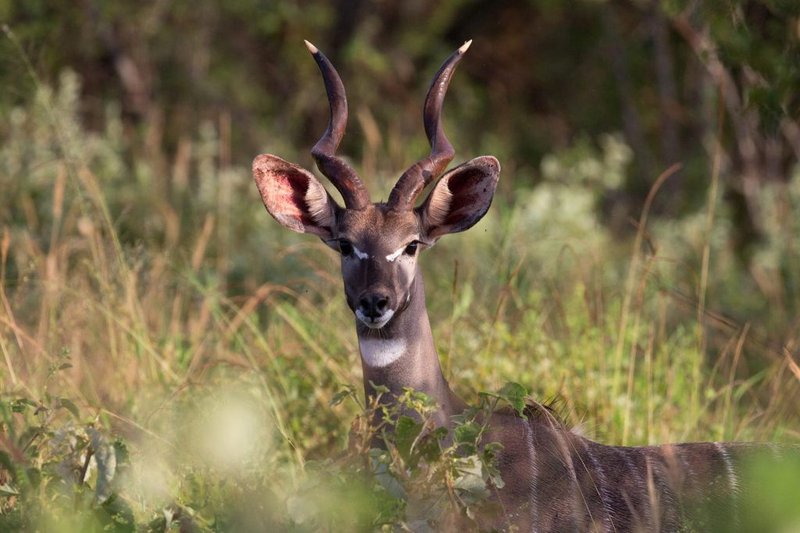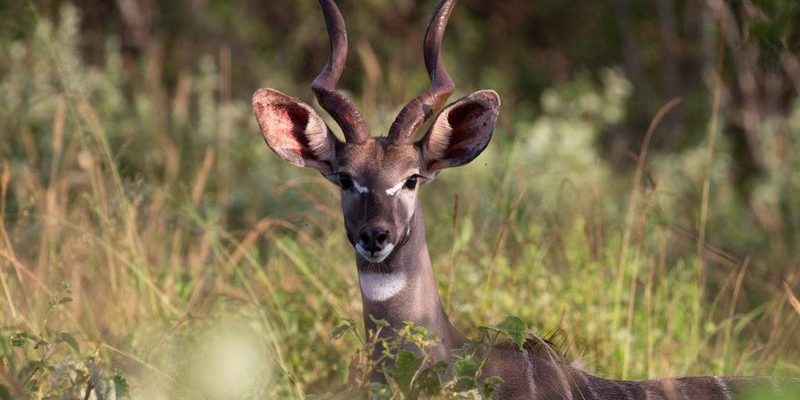
Many people might confuse lesser kudus with their larger relatives or have the wrong idea about their habitat and behavior. It’s easy to mix up traits or facts when it comes to wildlife. After all, the animal kingdom is full of characters that seem similar at first glance. In this article, we’ll dive into the common misconceptions about the lesser kudu and set the record straight, shining a light on this remarkable creature that thrives in the African bush.
What is the Lesser Kudu?
Let’s start with a brief introduction to the lesser kudu. These antelopes are native to eastern and southern Africa, primarily found in countries like Kenya, Tanzania, and South Africa. They’re smaller than their larger cousins, the greater kudu, standing about 3 to 4 feet tall at the shoulder. With their striking spiral horns (found only in males) and beautifully striped coats, lesser kudus are truly eye-catching.
Lesser kudus prefer dense bush and woodlands, where their agility helps them navigate through tricky terrain. Unlike some other antelope species, they’re not found in open grasslands. Instead, they enjoy more secluded habitats that provide cover from predators. This preference for woodland areas contributes to the myths surrounding them, as their elusive nature makes them harder to spot.
Myth
You might hear people say, “Oh, they’re just mini kudus.” But that’s not quite right. While lesser and greater kudus share a family and some similarities, they are distinct species with different behaviors and habitats. Greater kudus tend to roam in more open areas and can weigh nearly twice as much as lesser kudus.
Additionally, the lesser kudu has a unique build—more slender and agile, perfect for darting through dense foliage. Their horns also spiral differently, with lesser kudus sporting smaller, tighter spirals compared to the greater kudu’s impressive, large spirals. So, while they might share a name, these two antelope types are quite different in many ways.
Myth
Another common myth is that lesser kudus are solitary creatures. While they are indeed shy and elusive, they are not strictly loners. In fact, you might find them in small groups or pairs, especially females with their young. Males are often more solitary, but they will come together during the breeding season.
These social dynamics might remind you of how some animals, like cats, are often seen as loners, but that doesn’t tell the whole story. Lesser kudus will often stay close to their mothers until they’re ready to strike out on their own. This behavior emphasizes their adaptability and social structure, reinforcing the idea that they aren’t just wandering by themselves.
Myth
Many people think that because lesser kudus primarily eat leaves and shrubs, they aren’t efficient grazers. Here’s the thing: lesser kudus have evolved to thrive in their environments. Their diet consists mainly of leaves, fruits, and flowers, which they meticulously pick off branches. This selective browsing allows them to maximize their nutritional intake, even in habitats that may seem sparse at first glance.
Their long legs and slender bodies are designed not just for speed but for reaching high branches, too. This means they can access food that many larger animals cannot. Think of it as a gourmet dining experience in the wild—lesser kudus enjoy a variety of flavors from their surroundings, ensuring they get the nutrients they need while keeping their energy levels high.
Myth
You might be surprised to hear that lesser kudus are highly adapted to their environments. They possess excellent skills for camouflage, thanks to their striking coat pattern of reddish-brown with white stripes. This coloration helps them blend into the dappled light of the forest, making it harder for predators to spot them.
Their large ears also serve a purpose. With exceptional hearing, they can detect the slightest sounds, alerting them to potential dangers long before they become a threat. Lesser kudus are masters of stealth; they move quietly through their habitats and can freeze in place when they sense danger, making them hard to see.
Myth
Some may assume that because lesser kudus are primarily prey animals, they’re not very intelligent. But let me explain: lesser kudus exhibit remarkable cleverness. Their ability to adapt to rapid changes in their environment highlights their intelligence. They learn from experience, adapting their behaviors to avoid predators and find food.
For instance, they might change their feeding patterns based on what is safe or risky at different times of day. Lesser kudus also communicate with each other using a combination of vocalizations and body language. They might use subtle movements to signal danger or warn others in their group, showcasing a level of social intelligence.
Myth
You might think that lesser kudus are just hanging out in the bush without any significance. However, they play an important role in their ecosystem. By browsing foliage, they help maintain the health of the plants around them. This grazing encourages new growth, which benefits other herbivores and helps maintain the balance in their habitat.
Moreover, lesser kudus serve as prey for predators like lions and leopards, contributing to the food web. Their interactions with plants and other wildlife highlight how interconnected life is in the wild. Less obvious roles are often the most crucial!
Final Thoughts on Lesser Kudus
The lesser kudu is truly a fascinating creature with many layers. Understanding the truth about these animals helps us appreciate their value in the African ecosystem and dispel common misconceptions. They’re not just smaller kudus or solitary creatures—they’re agile, clever, and adapted to thrive in their habitats.
So next time you come across a lesser kudu in a wildlife documentary or on a safari, remember the myths that have been debunked. This elegant antelope deserves recognition for its unique traits and crucial role in the circle of life. If you’re ever in the vicinity of eastern or southern Africa, keep an eye out; you might just spot one of these elusive beauties in the wild!

